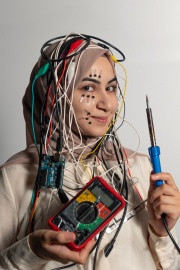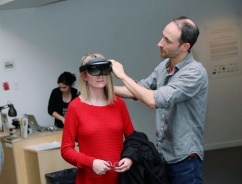Our Research Labs & People
Our active research labs & groups:
Who we are:
Dirk Arnold

- Evolutionary computation
- Optimization
Jamie Blustein
- Hypertext
- Human-computer interaction
- Web science
- Digital libraries
- Annotation
- Text analytics
- E-learning
- Sensemaking
Stephen Brooks

- Computer graphics
- Visualization
- 3D geospatial information systems
Bonnie Mackay
Joseph Malloch

- Human-computer interaction (HCI)
- Input device design and evaluation
- Sound and music computing
- Creativity support tools
Rita Orji

- Human-Computer Interaction
- Persuasive Technology
- Behaviour Change Systems
- Personalized and Adaptive Systems
- Human-Computer Interaction for Health
- Human-Computer Interaction for Development
- Internet of Behaviour
- Technology for Social and Public Goods
Gabriella Mosquera

- Data Mining
- E-Commerce
- Web Development and Design
- Human-Computer Interaction
- UI Design
Fernando Paulovich

- Information Visualization
- Visual Analytics
- Visual Data Mining
- Machine Learning
- Data Mining
Eric Poitras

- Computer science education
- Educational data mining
- Learning analytics
- Instructional design
- Adaptive instructional systems
- Self-regulated learning
Paul Ralph

- Software Engineering
- Human-Centered Design
- Game Design
- Project Management
- Research Methods
Derek Reilly

- Human computer interaction
- Ubiquitous computing
- Mixed reality
- Whole body interaction
- Computer supported cooperative work
- Information visualization
Srini Sampalli

- Cyber security, risk mitigation, vulnerability analysis, intrusion detection & prevention
- Emerging wireless technologies / Mobile computing
- Applications of near field communications (NFC), radio frequency identification (RFID) systems, smartphones, sensor networks & body area networks
Raghav Sampangi

- Learning and teaching strategies
- Innovations in pedagogy
- Context-aware and usable security and privacy
- Security (key management and authentication)
- Internet of Things and resource-constrained systems
- User interaction with mobile devices/applications
Oladapo Oyebode

- Human-Centred AI
- User Adaptive Systems
- Persuasive Technologies
- Dynamic User Modelling
- Intervention Design
- Digital Health
Rina Wehbe

- Games4change
- Learning and Education
- Affective Computing
- User Difficulty
- Expert Users
- Animal-computer Interaction
Mayra Donaji Barrera Machuca

- Human-Computer Interaction (HCI)
- Virtual Reality
- Augmented Reality
- 3D User Interfaces design and evaluation
- Spatial Thinking
Hanieh Shakeri

- Human Computer Interaction
- Ubiquitous Computing
- Design Research

